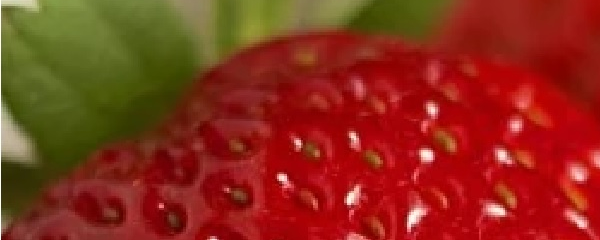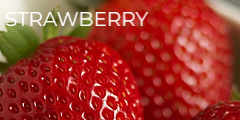

QUICK INFORMATION ABOUT STRAWBERRIES
PROPER NAME
Fragaria
COMMON NAME
Strawberry
TYPE
Fruiting Perennial
HARDINESS ZONE
0a to 9a (Perennial)
GERMINATION
Stolons
MATURE SIZE
10-30cm Tall / 15-60cm Wide
SUN EXPOSURE
Full Sun
SOIL TYPE
Well-Drained, Rich & Loamy
SOIL PH
Acidic (5.8 to 6.2)
STRAWBERRY
Virtually all varieties of Strawberry are cultivars of a hybrid known as Fragaria x Ananassa. This hybrid was first cultivated in France around the mid-1700s by crossing the North American Strawberry with a Chilean Strawberry. The seeds are external rather than internal, like a typical berry making the Strawberry an aggregate accessory fruit instead of a true berry.
Strawberries are an easy-to-grow perennial fruiting plant that provides an ample harvest for many years. Growing low to the ground with a habit of spreading deep green rigid leaves with small white flowers is the trademark of the Strawberry. The fruit eventually forms from the end of the leafless shoots. The individual plant grows slowly, but the runners quickly spread outwards.
With proper growing conditions, each mature strawberry plant can produce up to a quart of Strawberries each season. Strawberries can produce from late spring through the Fall, depending on the variety. In cooler climates like Canada, you should start your plants in the early spring.
PLANTING STRAWBERRIES
DEPTH
Cover Roots
PLANT/ROW SPACING
45cm / 90cm
GERMINATION
Bought as Stolons
DAYS TO MATURITY
50-60 Days
PLANTING SEASON
Early Spring
Strawberries are meant to be planted in rich, moist soil with 10-10-10 fertilizers about 45 cm apart. Doing this will leave room for your runners to spread across your patch. Planting them outside during the Spring months in our Canadian climate will ensure well-rooted and great producers the following year. We recommended that you pinch off the blooms in the first year to encourage plant root growth rather than fruit production.
Once you plant your Stolons with the roots covered and the crown exposed, be sure to MULCH throughout the patch. MULCHING deters weeds, and it also helps retain moisture and keeps the soil temperature low. NEVER use Black Plastic to mulch as it will raise the soil temperature. Using straw helps keep the soil cool, helps optimal fruit production and keeps your fruit out of the dirt.
NEVER plant your Strawberries near or where Peppers, Tomatoes, or Eggplants have grown, as it can spread Verticillium Wilt to your Strawberries.
PRUNING STRAWBERRIES
Pruning is very different depending on the variety of Strawberries. June-bearing plants will produce a lot of runners that you should leave alone. Meanwhile, Ever-bearing and Day-neutral should be snipped off as the runners offer inferior fruit.
A good habit when planting Strawberries is to pick the blossoms off the plant. This stimulates extra root growth in the first year, developing a healthier root system. Doing this will significantly increase fruit production from the second year on.
CARING FOR STRAWBERRIES
LIGHT – Strawberries require 6 to 10 hours of sunlight per day. We suggest at least 8 hours of direct sunlight a day as any less will stunt your fruit production. The more direct sunlight your crops get, the larger your fruit harvest.
SOIL – Strawberries require a Rich and Loamy soil with an Acidic pH (5.8 to 6.2) for maximum production. Remember to cover the roots of your stolons with dirt leaving the crown exposed. If you bury your stolons too deeply, the entire plant will wither, rot and die.
WATER – Strawberries require a lot of water to produce rich and juicy berries. You should aim for 2.5-5cm per week for the best growing results. Try to water regularly through the entire growing season, but it’s most vital during the flowering and fruit production.
TEMPERATURE/HUMIDITY – Strawberries require a temperature of between 15 to 27°C to produce fruit. Your plants will be able to survive in temperatures as low as -5°C if protected from the frost with proper coverage.
Strawberries are at serious risk in high humidity as this is a primary cause of Powdery Mildew. Try to keep lots of air circulation around your plants and avoid moisture on your leaves during high humidity.
FERTILIZER – Strawberries prefer compost-rich organic soil with 10-10-10 fertilizers at planting. Then be sure to fertilize again once flowering beings. DO NOT over-fertilize aim for 50 g/m2, or you will get lots of leaves but no flowers for fruit. NEVER fertilize late in the season, as the frost will damage any new growth and stunt the plant the following season.
VARIETIES OF STRAWBERRIES
JUNE-BEARING
June-bearing plants will produce a single crop over a 2 – 3 week period, typically in June or sooner in warmer climates. Removing the flowers during the first year will stimulate root growth and substantially increase future yields.
DAY-NEUTRAL
Day-neutral types will produce fruit through the season but in smaller quantities than other varieties. Production is not determined by the length of the day but rather by temperature. This variety will produce buds in temperatures as low as 1°C but will stop fruiting at temperatures over 24°C. Day-neutral types will offer smaller berries and substantially fewer runners than June-bearing.
EVER-BEARING
Even though the name would lead you to believe that Ever-bearing varieties will produce year-round, this is untrue. Ever-bearing types will offer two harvests, typically in June and again in the Early Fall.
HARVESTING STRAWBERRIES
Strawberries will begin to produce fruit over two to three weeks at the start of summer, depending on the variety. Strawberries are the sweetest when they have been fully ripened on the plant. Be sure to leave your berries on the plants for 2 to 3 days after they have fully coloured. Doing this will typically ensure the sweetest berries, but a taste test is the only way to be sure!
REMEMBER to always be gentle with Strawberries as they bruise easily. Cut the stem directly above the berry instead of pulling on it. Keep your harvested berries in a chilly location until you use them.
PROPAGATION OF STRAWBERRIES
Strawberries are perennial and will continue to come back year after year if wintered correctly. Propagation occurs through stem runners that sprout from the parent plant and root themselves in the soil. Once the runner has taken root, the connecting stem can be cut, and you can carefully dig up and transplant the new stolon wherever you wish. Pinning a runner in the soil will speed up the rooting process, and the best time to dig and transplant is in the Early Fall.
OVER-WINTERING STRAWBERRIES
In colder climates here in Canada, you must mulch over your Strawberry plants to prevent injury to the crowns. You should wait until the outside temperature touches -7°C and then cover the plants with several inches of straw or other mulches. Be sure whatever mulch you choose to use can be easily removed in the spring.
PESTS & DISEASES AFFECTING STRAWBERRIES
Strawberries are a high-maintenance plant that can suffer from several diseases, including Sun Scorch, Gray Mold, Root Rot, Fruit Rot and other Foliage Diseases. Common pests include Mites, Aphids, Nematodes, Slugs and Strawberry Weevils, not to mention Birds. Many different varieties of Strawberry are bred to be resistant to common diseases. Be sure to consult with your Local Garden Centre about the best selection for your region.
Education, Tutorials, Planning & More…
Click Here to Return to the Main Page


